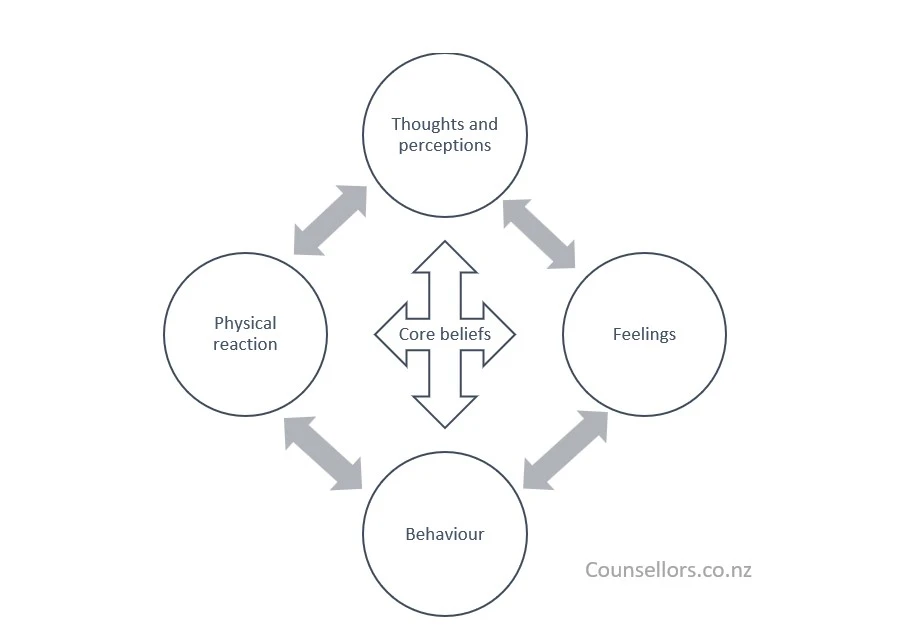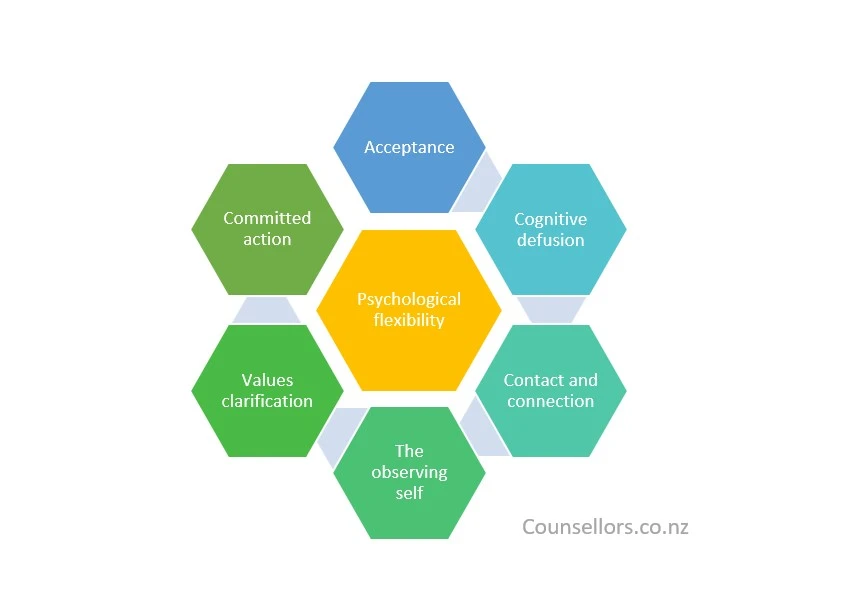What are intrusive thoughts?
According to the Anxiety and Depression Association (ADAA), intrusive thoughts are involuntary and have no bearing on reality. They can be disturbing and create physical discomfort. These images can be random and repetitive. It can be triggered if you are under stress, having insomnia or undergoing hormone fluctuations. It can also be an aspect of a more significant concern such as depression, post-traumatic stress syndrome-PTSD or obsessive-compulsive disorder-OCD.
Treatment for intrusive thoughts can be talk therapy or counselling. These days counselling is available face-to-face or online. Online counselling is convenient as you do not need to plan your travel, and you can have your session in the comfort of your home. Medical doctors also often prescribe medication in conjunction with talk therapy.
Types of intrusive thoughts
These sudden thoughts can be harmful, violent or compulsive. They are often correlated with safety or risk and can be offensive and explicit.
Negative mindset
·I am not good at this; why am I even doing this?
·Surely, someone will see that I am a fraud.
·I don’t think I deserve the accolade; I am useless.
·I can’t leave a task unfinished. I will not be a good person if I do that.
Violent imageries
·If I leave the oven on all night, the house might burn down while I am asleep.
·The bridge will collapse when I walk over it with my baby in the pram.
·I might violate my baby if I clean them incorrectly.
Compulsive notion
·I can’t stop eating, but I am already full.
·If I eat, I will get fat.
·I must wash my hands whenever I touch a foreign surface I don’t trust.
Harmful or disturbing thoughts can stem from presenting concerns about your relationship or life challenges. According to Dr Kerry-Ann Williams, a lecturer in psychiatry at Harvard Medical School, many people who experience these thoughts don’t have a mental health disorder. She adds that life stressors can increase the occurrence of disturbing thinking patterns.
Identifying intrusive thoughts.
While these sudden perceptions can be disturbing, that does not mean that you will act on them or that you are somehow weird or a psychopath. Dr Williams indicated that people are often hesitant to talk about it for fear of judgement.
Consider what they mean before assuming what you are as a person.
·That is a weird thing to think about.-Consider if there is any reason for the image to appear in your mind or if it is just a random event that your mind decided to conjure up.
·Does it bother me?- If you find it disturbing and want to push it away, it is an intrusive thought.
·I cannot stop thinking about it.-Unpleasant images can be easily triggered. The more you think about it, the worst it gets.
How do I manage my intrusive thoughts?
Managing these unwanted thinking patterns requires a conscious effort to acknowledge, accept and
forgive the thoughts. When it appears, you can take the following steps to
address them:
1. Identify the thoughts as unwanted.
-Take some to process what you are thinking about. Tell yourself,” That is not real. It is not who I am nor what I believe.
2. Acknowledge and Acceptance- You do not need to fight these thoughts.
-Connect with your thought in the present instead of draining your energy to try and banish them. Connecting with your thoughts helps you create awareness when you navigate your thoughts through your values, beliefs and ambitions.
3. Forgive- Forgiveness is about connecting with yourself and telling yourself that it is okay to have those unpleasant thoughts. Reaffirm your mind that this is not who you are, and you will not be doing that.
Seeking help for intrusive thoughts.
Sometimes you will need to talk to a counsellor or a therapist about these thoughts preventing you from living your life. There are two widely used behaviour therapy treatments, Cognitive behaviour therapy -CBT and Acceptance and Commitment therapy. Both therapies help treat psychological issues such as obsessive-compulsive disorder-OCD, post-traumatic stress disorder-PTSD and social phobias.
CBT- Cognitive Behaviour Therapy

CBT is a short-term treatment focusing on goal-oriented treatment. The main focus here is to help a person that experiences cognitive distortions and help them change their maladaptive behaviours. CBT helps a person analyse their activating event using the core principles below:
Ø Thoughts and perceptions- What was the thought? Encouraging the person to explore the unpleasantness that emerges and process it in the here and now.
Ø Feelings- How did you feel about it? Explore the emotions that emerge from having unpleasant thoughts.
Ø Behaviour – How did you respond? What did you do? Check-in on the actions taken by the person when they have experienced a bad emotion.
Ø Physical reaction – Bringing the focus back to the physical sensations the person has experienced, such as shortening of breath or tightness in their chest.
The end goal of CBT treatment is to empower the person to develop an ability to query their thinking processes before taking action when experiencing unpleasant imagery or thought.
ACT- Acceptance and Commitment Therapy

ACT is a branch of CBT therapy. This therapy uses a holistic approach to encourage the person to take the journey through unpleasant experiences to uncover the meaning behind those experiences and achieve psychological flexibility. There are six core principles to ACT therapy:
Ø Acceptance – Encouraging the person to embrace the unpleasant negative experience and move away from the denial or attempt to change it. The aim is to help the person expand, allowing the unpleasant feelings and thoughts to be felt and discovered so they may identify why the experience is unpleasant.
Ø Cognitive defusion- help the person separate their association with the negative perceptions towards their thoughts, memories or images. The ACT therapist can encourage them to step back and analyse those perceptions that they currently have.
Ø Contact and connect with the present moment- ACT looks at how a person connects with the mind, the body, the thoughts, the images and memories in the present. Letting the person tell the story of their values and interest and how they came to be who they are.
Ø The Observing Self – Creating a transcendence sense of self. Developing an awareness that the physical body, the thoughts, the feelings, the sensations and memories are all parts of the person, but those parts individually do not make the person.
Ø Values and clarification – Focuses on the qualities the person wants to work towards and hold onto at any moment. Clarity is vital to define what those values mean to them. Values are not to be confused with goals. Values are about our priority in life, so we feel more wholesome. A good example is family values. A happy family requires us to work on things such as working and looking after our young ones. Therefore, we set goals to work more efficiently and have more time with the family.
Ø Committed action – Setting the goals. Explore the desire for the goals they have set. Explore the possibility of not achieving the goals. Reaffirming that failing to achieve goals the first few times does not mean it is not achievable infinitely.
Everyone is likely to have unpleasant thoughts from time to time. Most try and dismiss it and go about their day. If it becomes something you are likely to contemplate over and over in your mind, it is worthwhile to seek professional help. There is more value in getting treatment and reclaiming the pleasure of living than living in a vicious cycle of intrusive thought.
